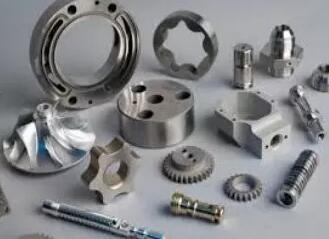Aug. 26, 2023
Mechanical Parts & Fabrication Services
In the modern world of manufacturing, where innovation and efficiency reign supreme, processes like aluminium extrusion have emerged as cornerstones of various industries. Aluminium extrusion is a versatile and cost-effective method of shaping aluminium alloys into complex profiles with a myriad of applications. From architectural frameworks to automotive components, this process plays a pivotal role in shaping our surroundings.
Understanding Aluminium Extrusion: At its core, aluminium extrusion involves the transformation of a billet or cylindrical log of aluminium alloy into a specific shape through a controlled process of applying heat and pressure. The heart of the operation lies in the extrusion press, a sophisticated machine designed to handle high temperatures and pressures. The process begins with a carefully selected aluminium alloy, often a mixture of primary and recycled aluminium, which is heated to a temperature where it becomes pliable but not molten.
The Extrusion Process in Detail: The extrusion press pushes the heated aluminium billet through a die, which is a specially designed opening that imparts the desired shape to the material. Dies are typically made from tool steel and can be intricate, allowing for the creation of a wide range of profiles. These profiles can be as simple as rods and tubes, or as complex as intricate cross-sectional designs used in construction and aerospace.
As the billet is forced through the die, it takes on the shape of the die's cross-section. The pressure exerted during this process ensures that the resulting profile maintains consistent dimensions and a smooth surface finish. Once the extruded profile has passed through the die, it is cooled, either through water quenching or air cooling, to harden it back into a solid state. After cooling, the extruded lengths are cut to the desired size.

Advantages of Aluminium Extrusion: The popularity of aluminium extrusion service can be attributed to its numerous advantages. Firstly, it offers exceptional design flexibility. The ability to create intricate shapes with precise tolerances allows for tailored solutions to various engineering challenges. Secondly, aluminium extrusion is highly efficient. The process generates minimal waste as offcuts can often be recycled, aligning with sustainable manufacturing practices.
Related links:Furthermore, aluminium extrusion results in profiles that are lightweight yet structurally robust. This makes them ideal for applications in industries such as transportation, where weight reduction directly impacts fuel efficiency. The natural corrosion resistance of aluminium alloys also adds to their appeal, as they require minimal maintenance even in challenging environments.
Applications Across Industries: The applications of aluminium extrusion span a wide spectrum of industries. In architecture, extruded aluminium profiles are used in window and door frames, curtain walls, and structural components of buildings. The automotive sector relies on extrusions for engine parts, chassis components, and decorative elements. Aerospace industries benefit from the lightweight yet strong characteristics of extruded aluminium in aircraft frames and interior fittings.
Electronics, too, leverage extrusions for heat sinks and components that require electromagnetic shielding. Extruded aluminium finds its way into consumer goods like furniture, sporting equipment, and even kitchen appliances due to its aesthetic appeal and durability.
In Conclusion: The aluminium extrusion process is a prime example of how technology and innovation can transform raw materials into functional components that shape our world. Its ability to turn a malleable metal into precise, custom profiles has earned it a central place in modern manufacturing. As industries continue to evolve, aluminium extrusion remains a vital tool, driving progress and enabling the creation of products that define our technological landscape.
Previous: Which is better CV joints or universal joints?
Next: Anti Corrosive Primer: Protecting Metal Surfaces From Corrosion
Related Articles
If you are interested in sending in a Guest Blogger Submission,welcome to write for us!
All Comments ( 0 )